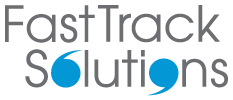Looking to improve your lead gen? In that case, personalisation matters more than ever.
With more and more customers demanding a personalised and consistent multichannel experience, brands must provide this or face being left behind. According to McKinsey, 71% of consumers expect companies to deliver personalised interactions, and they become increasingly frustrated when this does not happen.
Content personalisation is key for successful lead generation. It can lead to better conversion rates, improved brand reputation, and increased engagement between customers and your campaigns.
But what do we actually mean by personalisation, and how can we go about achieving success?
Why do we need personalised marketing and content?
In lead generation, personalisation involves tailoring both the marketing and sales experience for individuals based on specific characteristics and preferences. First, you need to understand the prospect’s needs and priorities, and be able to deliver targeted, relevant and timely messaging to them.
Personalised marketing in lead generation is intended to create a meaningful experience for the lead, while building trust and credibility for your brand. Essentially, a personalised experience should improve your chances of the lead converting into a customer.
Whether it’s by using targeted landing pages, tailored emails, or direct communication, you can make a real impact with potential customers by using personalisation.
What does Content Personalisation mean?
A sure sign that a prospect will purchase from you (eventually!) is that they keep engaging with the content you provide. Personalised marketing is the best way to keep your leads engaged, as these activities should be targeted and built around what they want, who they are, what they do, and how they behave.
Personalisation should be present throughout the customer journey, from the first touchpoint through to post-sales. It’s an ongoing process, so it’s useful to keep testing and reiterating your approach to ensure your leads and customers receive the best possible experience.
Segmentation for personalisation
Personalisation is appreciated by 69% percent of customers, as long as it is based on data they have explicitly shared with a business.
The first step to personalisation is gathering data, to be able to understand your audience. Make sure you have a good foundation of data to work from – including industry type, job role, and of course up-to-date accurate contact details.
Once you have this data, you can begin to segment your audience into different groups based on their industry, job role, and challenges. This information can be used to deliver personalised messaging to your potential customers.
Let’s take a look at the different ways you can segment your audience:
Needs-based segmentation for lead nurturing
Needs-based segmentation groups customers based on what they need from a product or service. It’s fairly easy to establish this type of segmentation – you just need to listen to enquiries and pinpoint the reasons why leads have communicated with you. Common needs and themes will often be apparent.
Firmographics and industry segmentation
Think of firmographics as demographics, but for businesses. Firmographics group customers based on characteristics such as location, industry, and business size. These groupings can also include revenue, number of employees, and so on. For example, different industries and sectors may have very different needs and goals, and so it’s important you target them according to these for successful lead nurturing.
The aim is to identify particular types of businesses and tailor your marketing to them accordingly. It is a fairly inexpensive method of segmentation in comparison to other options – the information you need will be largely available to the public.
Behaviour-based segmentation
Behaviour-based segmentation stems from monitoring how your customers interact with your product or service. Once you know their behaviour, you can establish certain touchpoints and responsive communications to provide upsell opportunities based on what will be relevant to them. Behavioural segmentation helps you collect data on the relationship your customers have with your brand’s offering, and can improve your lead nurturing efforts.
Job type segmentation
Targeting based on individual job types can help you find out if it is worth spending time on a particular account, and also help you tailor the language you use in marketing communications. This type of segmentation can take into account seniority, level of responsibility, job role, and so on. Different individuals will have different challenges, needs, and priorities, and so it’s beneficial to target them accordingly.
Dynamic content for lead nurturing
The process of lead nurturing can be improved by using personalised, dynamic content. This style of content should be based on leads’ preferences and behaviours, and can include things like customised articles, personalised ads, targeted product recommendations, or real-time updates.
One of the most important things behind making your dynamic content successful is your marketing database. Having a central database of the interaction history from your prospects and leads allows you to customise your audience’s experience (on your website, for example), create more personalised marketing experiences, and also provides a great amount of information which can be passed to your sales team following the qualification of a lead.
Personalised marketing for lead quality
Quality, over quantity.
Personalised marketing can have a huge impact on lead quality following lead generation across the sales and marketing process. It can help attract more qualified and engaged leads, and increase conversion opportunities. Ultimately, content marketing personalisation allows your brand to build credibility with leads by delivering targeted and relevant experiences tailored to their needs and preferences.
If you have a great time with a friend, you’re likely going to want to see them again – right? This is the same for your prospect’s interactions with your brand. Give them a great experience and they’ll likely come back to you for more.
Measuring the impact of content marketing personalisation
91% of consumers are more likely to shop with brands that recognize, remember, and provide relevant offers and recommendations.
Measuring your success in content marketing personalisation for lead generation is key to understanding how your efforts are impacting your business and helping you make data-driven decisions for future improvements. There are a few key metrics to guide you when you come to evaluate your personalisation efforts:
A/B testing: conduct testing to measure the impact of different approaches to personalisation, and see if different methods affect lead engagement or conversion.
Lead engagement: track metrics such as click-through rates for targeted landing pages, open rates for personalised emails, and conversion rates for personalised deals and offers.
Customer satisfaction: use metrics such as NPS and customer feedback to track satisfaction with the personalisation experience.
ROI: work out the return on investment of your personalisation initiatives, and calculate the revenue generated from better lead quality and conversions.
Lead quality: the quality of leads generated through personalisation can be measured by the percentage of those that become customers, and their lifetime value as customers.
By tracking these metrics regularly, the impact of your personalisation efforts will become clear. You’ll also be able to identify improvement areas and make better decisions in future.
If you’re looking to improve your lead generation process, or would like help with content marketing personalisation and audience segmentation, get in touch with Fast Track Solutions today and learn more about our proactive and prospect-focused approach.





